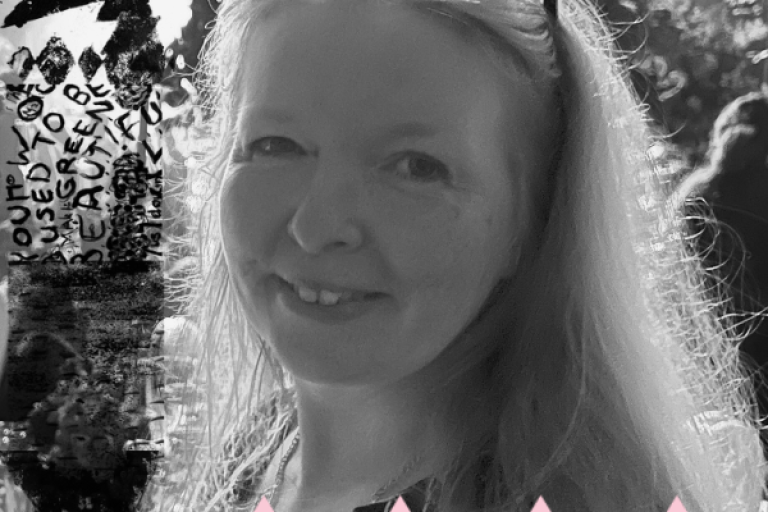
Bruce Castle, a Grade I listed former 16th century manor house on Lordship Lane in Tottenham, houses Haringey’s museum and archive.
Having worked at the museum for over two decades, Deborah is one of the leading experts on Haringey’s history and heritage. She has recently overseen the MEND programme, which has seen the transformation of the museum’s East wing, opening new gallery spaces to celebrate different aspects of Haringey’s unique history.
How long have you worked in Haringey, and in which part of the borough do you work?
I have worked for Haringey Council at Bruce Castle Museum & Archive since February 2002 – first as Assistant Curator and then Acting Curator, and finally Curator (although I had been working there in a freelance capacity as well as volunteering since 2000 delivering community projects.)
As a creative and activist, how has Haringey influenced you?
I have had the privilege of working with local people to explore Haringey’s history, heritage and community stories for the past 25 years, bringing to the fore voices that should be heard and uncovering hidden histories. The stories of Haringey’s people and culture never fail to fascinate and inspire me – the positivity and resilience of locals’ stories from the past to the present continue to drive our creativity.
What is your definition of a rebel?
From my standpoint, looking back over many hundreds of years of rebels and resistance in the borough, several traits stand clear for what a rebel is to me: someone who has made a difference by taking a stand, giving their voice, or acting on their convictions – either quietly getting on with it, or being the lead and inspiring figurehead.
What’s the best careers advice you’ve received?
Not so much about careers advice but about when I started out volunteering in museums: when contacting places to volunteer, you may get a negative response. If you do, always say thank you and acknowledge – you never know when your paths may cross again or opportunities may arise another time; and do still continue to take an interest in that organisation.
When and where do you feel at your most powerful?
I feel part of a powerful situation when a community event, project or exhibition comes together and there is a gathering of like-minded people, enjoying, appreciating and valuing each other’s experiences and stories.
What would be a dream contribution to Haringey’s year as the London Borough of Culture?
Maybe not a dream but I would like to see Haringey dedicate a day asking people to tell their own stories or about someone they know in the borough who has made a difference through their activism - or nominate them for their story to be told. The stories to be posted online (think online ‘flash-mob’ storytelling).
What’s the funniest thing you’ve heard or read about yourself that isn’t true?
Maybe not the funniest thing, but it is about something directed to me that isn’t true. At a friend’s wedding, his dad sought me out and started a conversation with me about how did I find presenting the weather for the BBC. Stunned for a moment, I then realised he thought I was Isobel Lang, the weather presenter on the BBC (at that time). She happened to be another guest at the wedding, you see. Just got the wrong red head.
What is your favourite hidden Haringey gem?
As an advocate for exploring Haringey, I find this a hard one – I have lots of favourites I consider gems. Two I love are certainly hidden and overlooked: the first - The Priory, Grade II*, a 1620 Jacobean farmhouse with gorgeous garden tucked away in Church Lane between Bruce Castle and All Hallows Church, N17. The second is Summerhill Road in N15, a Victorian ‘sample street’ of different architectural styles with glorious stories that have been shared online about its residents.
Which other Haringey creative would you spotlight and why?
Too many to choose from! This creative I got to know more during the Haringey Feast story chair activities: Sunbul Akhtar runs @nightpress (at night) from her home studio in Muswell Hill. She works in publishing during the day. From cutting into lino, she uses printmaking as a form of activism and resistance. Her prints have a strong presence of post-colonial themes, retelling dominant narratives on colonialism and reconnecting with her culture. I just love her work - the colours, the sensitivity, the intelligence and creativity in her retelling of stories.
Bruce Castle Museum is open Wednesday-Friday, 1-5 pm. Plan your visit at www.brucecastle.org.
Want to get regular content like this straight to your inbox? Sign up for our London Borough of Culture newsletter for updates on cultural happenings right across our Rebel Borough, and information on how you can get involved as we gear up for our London Borough of Culture year.
